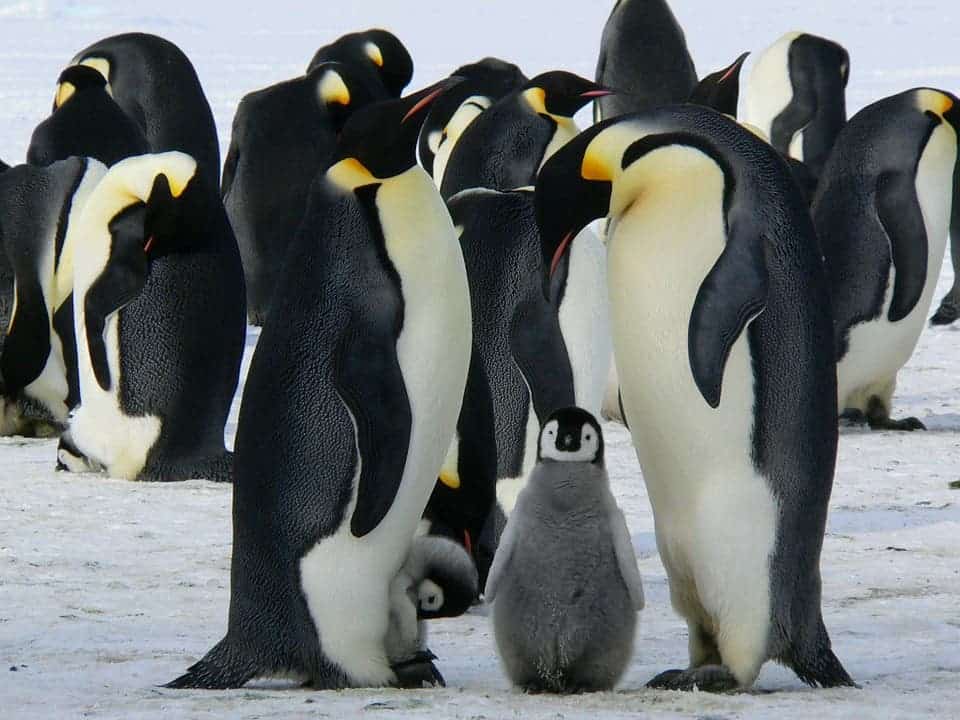World Penguin Day is upon us. Pioneered at McMurdo Station — an American Research center on Ross Island in Antarctica — to raise awareness and inform the public more about the plights of flightless birds, it has been embraced by environmentalists all over the globe. Scientists noticed that April 25 was the specific day on which the Adelie penguins began to make their trip north for food during the wintertime, so that was the day that got the devotion.
While popular belief is that all penguin species live in Antarctica, in fact, only five have ever visited, and only two (the Adelie and emperor) call it home 24/7. The Humboldt of Chile and Peru live on the shores of the Atacama Desert, the driest desert in the world where temperatures can reach around 70°F (21°C). The yellow-eyed penguins of Enderby Island off New Zealand burrow under the trees of the dwarf rata forests.
According to the World Wildlife Federation, out of the total 17 – 20 species that live in the world (scientists still aren’t sure of the exact number), 11 of them have been categorized as endangered or at risk.
So to celebrate World Penguin Day, we thought we would provide a little more info on these adorable animals. These are all the penguin facts you never knew you needed in your life.
Facts about penguins
1. Penguins get their moniker from a group of 16th-century travelers, who on an exploration to the Southern Hemisphere, saw these black and white birds that resembled great auks (scientific name: Pinguinus impennis), a now-extinct species which inhabited the seas around eastern Canada.
2. They are probably best known for the “tuxedo” look. Why do they look like this? Simple, its camouflage called “countershading.” Creatures looking up from the depths will only see the white underbellies. From above, only the dark part of the animal is visible, blending it in to the sea below.
3. While most birds have porous bones which make it easier for flight, penguins actually have solid bones as they help the penguin to swim as solid bones reduce buoyancy. They actually spend 75% of their time in the water, which is one reason they aren’t really afraid of humans — they don’t have many land-bound predators to speak of.
4. The emperor penguin is the fastest swimmer. It can reach 9 mph (14 km/hr) when times call for it. On average, penguins dive to depths between 30 and 60 feet.
5. Penguins help keep warm thanks to a gland near the base of its tail which they spend several hours a day coating their body with. The gland provides a waterproof oil which keeps them safe from the frigid arctic waters.
6. In the eyes of a human, male penguins aren’t exactly the most righteous gift-givers. What does a tuxedo-looking bird give to his lady? Rocks. Males will attempt to woo the ladies with the finest stones. She will, in turn, use these to build a nest. The rocks help keep the eggs above the surface when the rookery floods from melting snow.
7. In a related fact, the females often prefer the pudgier guys. Since it is the males that incubate the eggs in some species while the females leave to hunt for weeks at a time, that pudge is actually fat storage which the males will live off of until the females return.
8. Since penguins ingest a good amount of seawater when they hunt for five, they evolved a supraorbital gland which filters saltwater from their bloodstream. They then excrete it through their beaks by sneezing.
9. While most birds lose their feathers one at a time, penguins lose them all at once. This is a process called “catastrophic molt,” and leaves them land-bound for two to three weeks. Also as opposed to normal birds where feathers are used for flight, the feathers of a penguin are used to regulate body temperature and aerodynamic efficiency. They also minimize drag by trapping bubbles against their body and then releasing them when penguins dive.
10. The first written record of penguins comes from Antonio Pigafetta, who was aboard Ferdinand Magellan’s first circumnavigation of the globe in 1520. Magellan and company spotted the animals near what was probably Punta Tombo in Argentina and called them “strange geese.” (Though an earlier, anonymous diary entry from Vasco da Gama’s 1497 voyage around the Cape of Good Hope makes mention of flightless birds as large as ducks.)
11. The smallest penguin weighs in at no more than three pounds. The Little Blue Penguins (also called little penguins or fairy penguins), grow to only 13-15 inches in height.
12. They are very sturdy hikers. Some species have the ability to march up to 60 miles in a single day when trekking to their breeding grounds. The unusual gate you see is called “tobogganing.” In the water, they’ll use their feet to act as rudders, using them to control their direction.
Now that you know a few more fun penguin facts, go get dressed up in your finest tux and enjoy World Penguin Day.



